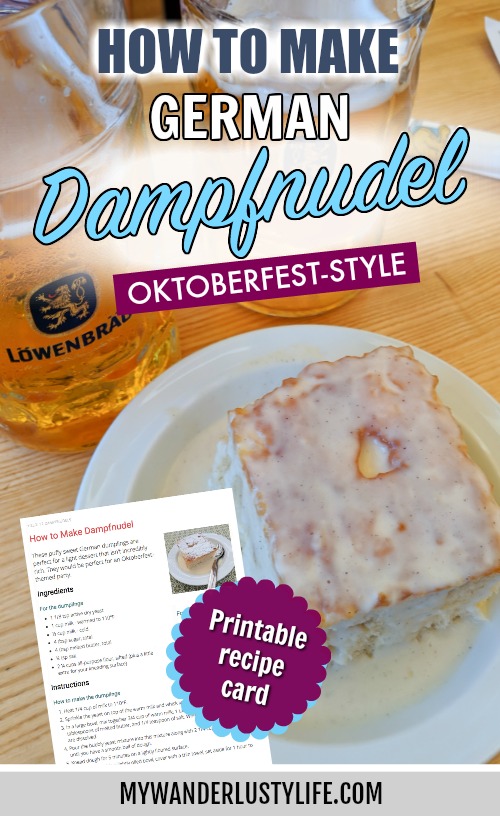My desire to learn how to make dampfnudel comes straight from the beer tents of Oktoberfest (as does most of my desire to do anything, if I’m being honest here). I first tried dampfnudel at Oktoberfest in Munich and fell instantly in love with this sweet, puffy, bready, sauce-covered dessert. Though, dampfnudel is also a popular German Christmas market food.
I’m not someone who loves super rich, chocolate-y, or fruity desserts. And for those reasons, I’m out (of eating dessert altogether, that is). So when I discovered dampfnudel, I knew it was a beautiful partnership in the making. Besides, I haven’t met a German dumpling I haven’t wanted to run away with.
Dampfnudel (which translates to “steamed noodle” even though it’s not a noodle at all?) is a puffy sweet bread dumpling covered in a lightly sweet sauce. These steamed dumplings are perfect for those, like me, who want a little something sweet after dinner, but who can’t stomach a molten lava triple chocolate explosion.
At the bottom of this post is a printable recipe card for you to keep. It covers the ingredients and basic steps of how to make dampfnudel but check back to this post for all the details.
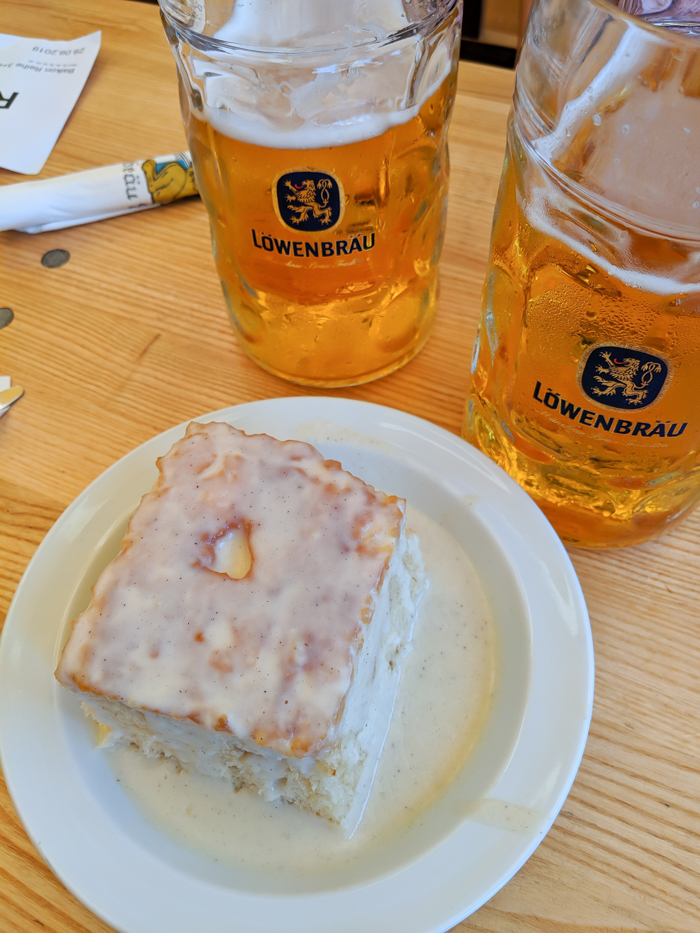
Homemade dampfnudel recipe
Because, let’s face it, I didn’t want to wait a whole year every time I craved some dampfnudel, I decided to try to make it at home. And even for someone as kitchen-inept as me, it wasn’t all that difficult either.
However, I’ll admit that at first I was extremely turned off from making this. All the recipes I found were enormously and unnecessarily complicated for novices like myself. This isn’t the British freaking Bake Off. This is Ashley’s half-assed kitchen. I may be a beginner in the world of Oktoberfest desserts but dang it I still want my sauce-covered sweet bread!
It wasn’t until I found the dampfnudel recipe on the Spruce Eats that I realized I may have a chance at this. This dampfnudel recipe is adapted from that one.
For optimal results: I’ve heard the dampfnudel just tastes better if you listen to my authentic Oktoberfest playlist while you’re baking. Maybe I’m mistaken… but maybe I’m not…
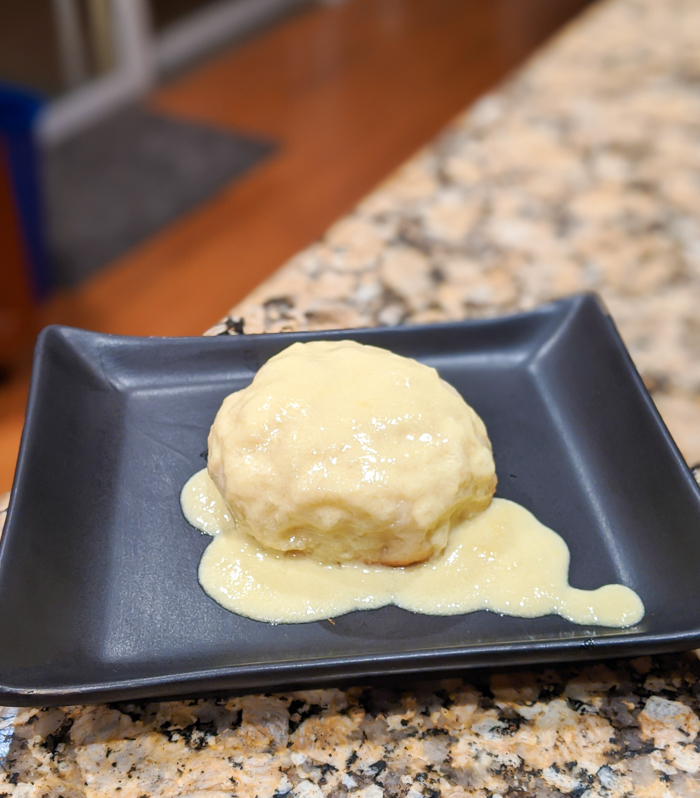
Tools you’ll need
Everything I needed to make dampfnudel was already in my kitchen. And if I already own this stuff, there’s a good chance you do too. Here’s what you’ll need to make dampfnudel:
- Measuring spoons and cups
- Small, medium, & large bowls
- Kitchen thermometer, if you’ve got one
- Kitchen towel
- Sharp knife or pizza cutter
- Whisk
- Hand mixer / Stand mixer
- Baking sheet
- 12-inch skillet with tight-fitting lid
- Stovetop
- Medium-sized Saucepan
- Spatula
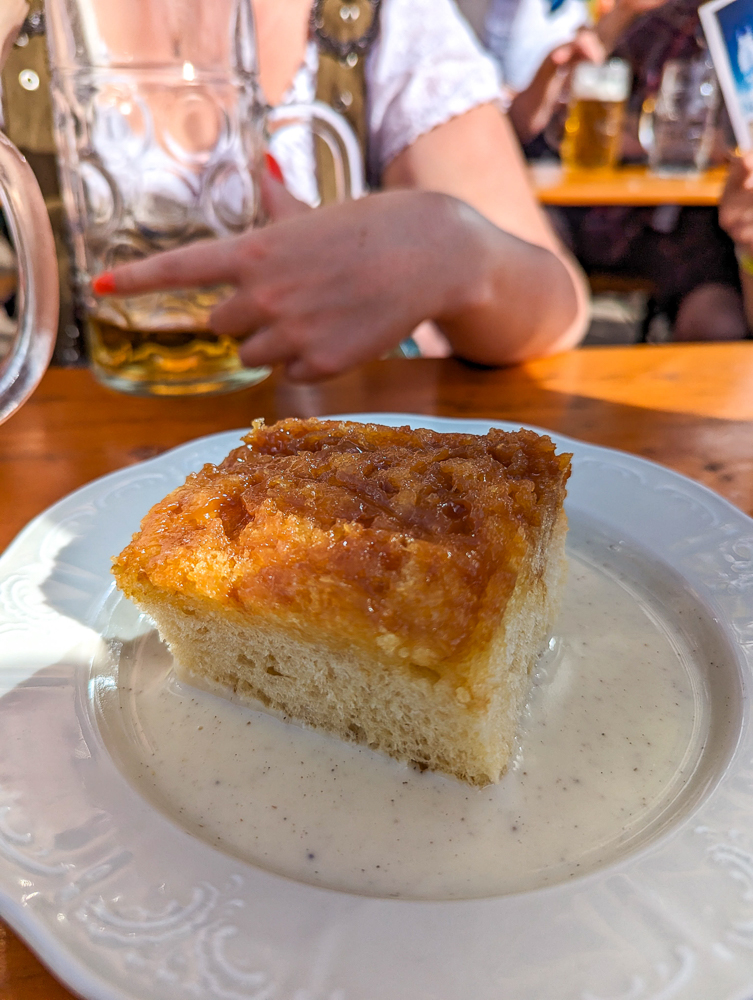
Ingredients
Like the tools, the ingredients used to make dampfnudel are everyday items you probably already have (with the exception of maybe yeast). And if your local stores are still out of yeast, try your local breweries. Given our current situation, many have taken to selling kitchen staples like flour and yeast in addition to beer and pizza. I’ve been getting both my flour and yeast at my favorite local brewery.
You can also pick up yeast on Amazon if you’ve also got, say, cat litter and ink pens on your shopping list.
To make dampfnudel you’ll need these ingredients:
For the dumplings
- 1 ⅛ teaspoon active dry yeast
- 1 cup milk – warmed to 110°F, total
- ½ cup milk – cold
- 4 tablespoons sugar, total
- 4 tablespoons melted butter, total
- ¼ teaspoon salt
- 2 ¼ cups all-purpose flour, sifted (plus a little extra for your kneading surface)
For the sauce
- 4 egg yolks
- ½ cup sugar
- 2 cups milk
- 1 teaspoon vanilla extract
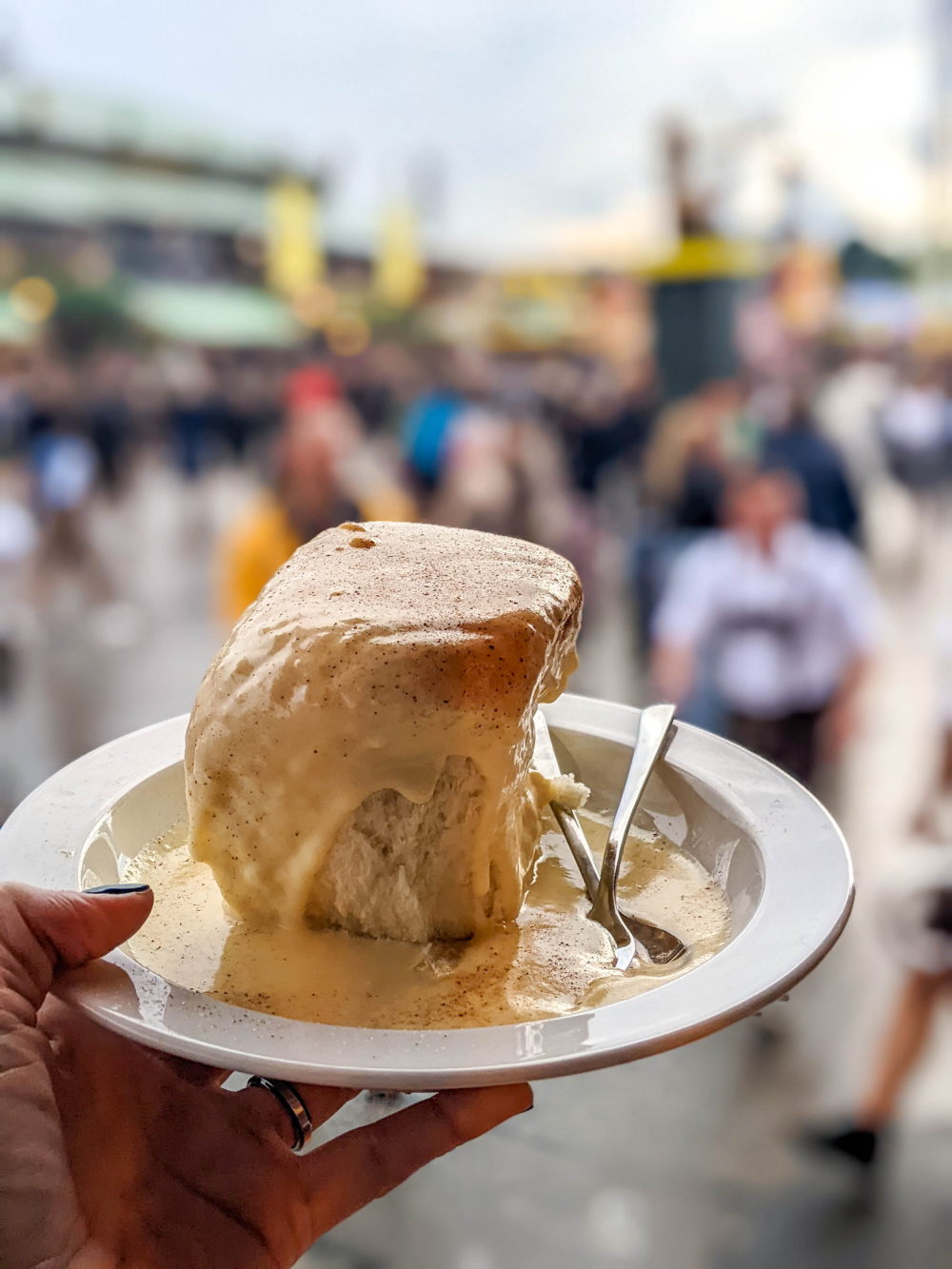
How to make dampfnudel at home
If you’ve checked out my Oktoberfest pretzels recipe, you can rest assured that any recipe you read on this site will be simple, straightforward, and only require the bare minimum of patience and expertise.
In short, if I can do it, you can do it. And I’m going to explain how in terms that even a 5th grader could understand. Let’s get cooking!
How to make the dumplings
Prepare the yeast
Step 1: Heat ¼ cup of milk to 110°F. Personally, I just put the measuring cup of milk in the microwave for about a minute and check the temperature using a kitchen thermometer. Then I pour into a small bowl.
If you don’t have a kitchen thermometer, you can use your best judgment to determine what “pretty warm” is. Just make sure it’s not “too cold that the yeast won’t wake up” or “too hot that the yeast will die.” Since I have absolutely no kind of instinct for this, I rely heavily on my kitchen thermometer.
Step 2: Add 1 tablespoon of sugar to the warm milk and stir until dissolved. (Consider this meal prepping for yeast.)
Step 3: Sprinkle 1 ⅛ teaspoon of the dry yeast on top of the warm sugary milk and whisk lightly. Set this aside for about 10 minutes. After this time you should have a pretty bubbly mixture.
Fun fact: Warm liquids are what wake the yeast up; sugars are what they eat; and CO2 is what they produce. So when yeasts wake up and get to eating, the result is the bubbles that give breads and other baked goods their “rise.” So, they wake up hungry and get super gassy immediately after breakfast. And for once that’s a good thing.
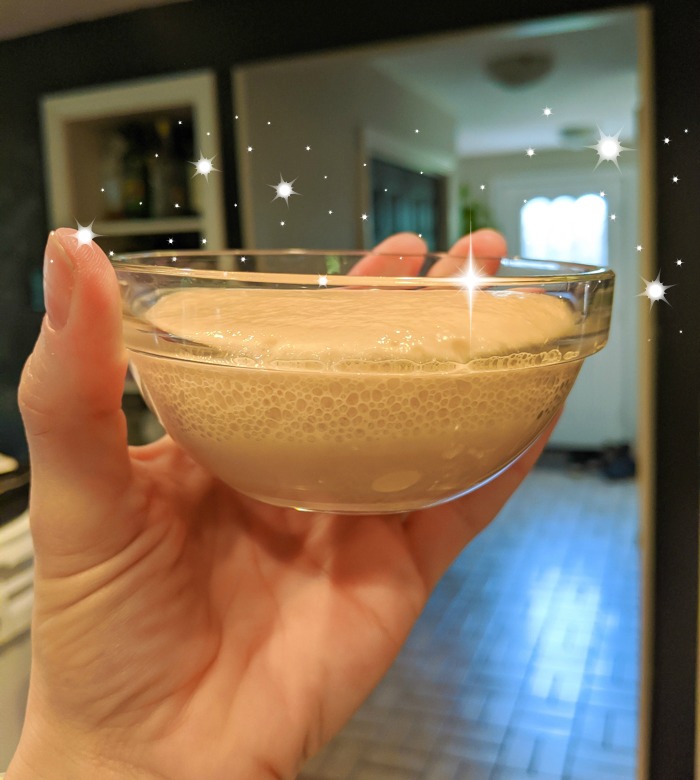
Make the dough
Step 4: In a large bowl, mix together the other ¾ cup of warm milk, 1 tablespoon of sugar, 2 tablespoons of melted butter, and ¼ teaspoon of salt. Whisk until the salt and the sugar are dissolved which should take just a couple of minutes.
Step 5: Once you have a pretty smooth (not crunchy) liquid mixture, pour in the bubbly yeast mixture along with 2 ¼ cups of sifted all purpose flour. Beat using a stand or hand mixer until you have a pretty smooth, squishy dough ball. (Bonus points if you have a stand mixer with a dough hook!) You may need to finish off the dough mixing with your hands.
If your dough is gooey and sticky, add a little bit more flour. If you think it’s too tough, add a little bit more milk and mix in thoroughly.
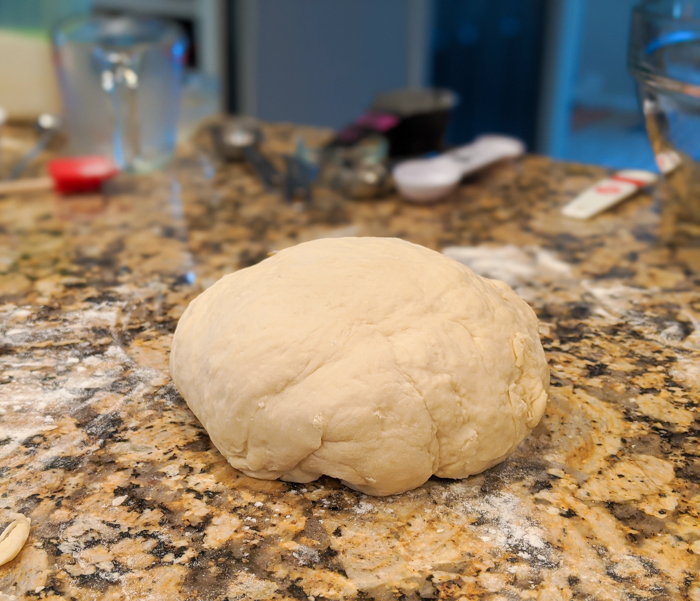
Prep the dough
Step 6: Knead your dough ball on a lightly floured surface for about 5 minutes.
Kneading dough helps develop the gluten and is what gives bread and other baked goods their light fluffy textures. I realized almost instantly that I had no idea how to knead dough. Don’t be like me—watch this video on how to knead dough before getting your hands all up in there.
Step 7: Lightly oil or spray the inside of another large bowl (or the same, doesn’t matter really) and put your dough ball in it. Cover it with a thin kitchen towel, set aside in a warm spot (like a sunny window), and leave it alone for an hour. This allows the dough to rise and after an hour it should have doubled in size, well on its way to becoming the next Ghostbusters villain.
Pro tip: I mean super lightly oiled. Like, one teaspoon should cover the whole bowl—just enough to make sure the dough doesn’t stick to the bowl. If you over-oiled, you’ll know it. And if that’s the case, blot your dough ball with a paper towel—it’ll be fine.
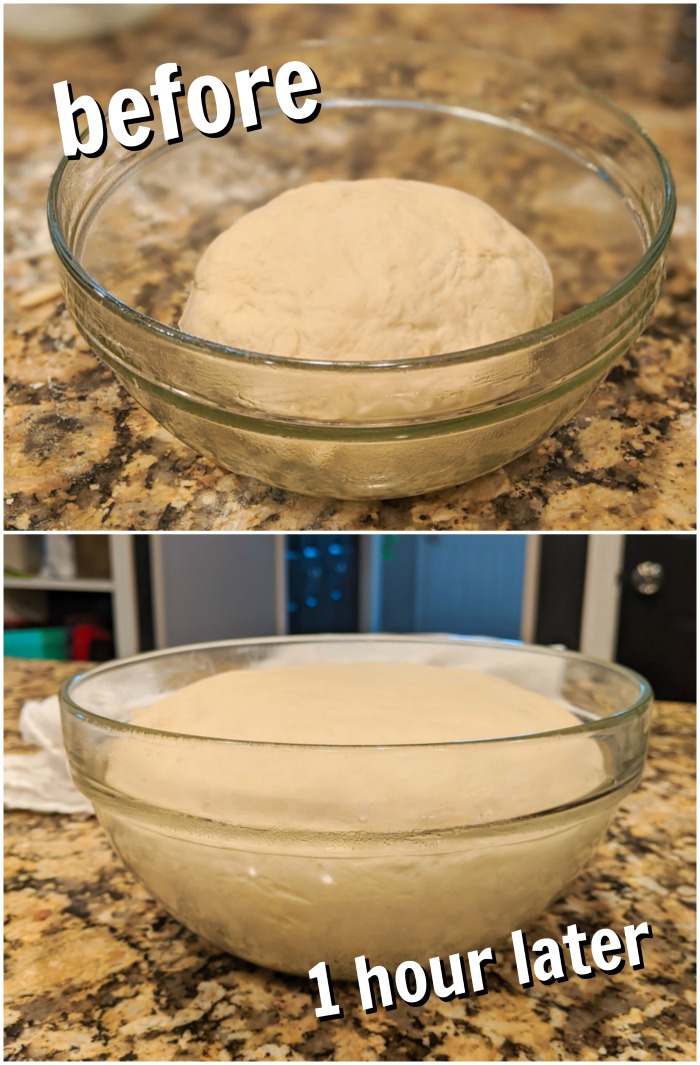
Step 8: While still in the bowl, punch down your now super huge ball of dough. Meaning: just plant your fist right into it—firmly but gently. Punching the dough down helps to release all the pent up air bubbles trapped inside.
The irony of the fact that you have to encourage the bread to rise, then punch the air out of is not lost on me. It’s just… #science.
Make the dumplings
Step 9: Remove your dough ball from the bowl and place it back on your work surface. Form it into a uniform log shape and cut into 12 equally-sized pieces.
For this I prefer to use a pizza cutter but some people just rip the pieces right off or use one of those simple dough cutters. However you want to do this—samurai sword, sharp knife, tiny kitchen guillotine—just make sure all the pieces are as close to the same size as possible.
Step 10: Take these 12 pieces and form into dumplings. You could absolutely just roll them up into balls and call it a day. That just means your final product will be a little rough around the edges but should taste the same. #theuglydumpling
To form the dumpling, first roll the dough into a ball. Next, take the dough from one side and stretch it around the rest of the ball, collecting it all on the bottom and pinching it closed. This should result in a pretty smooth dumpling.
Step 11: Do this for each of the 12 dough portions and place each on a very lightly oiled baking sheet a couple of inches apart. Cover with your thin kitchen towel and set aside for another 45 minutes to rise even more.
Pro tip: During this particular waiting phase, I start the process of making the vanilla sauce so that I’m able to cook both that and the dumplings at the same time. Instructions for creating the sauce are below.
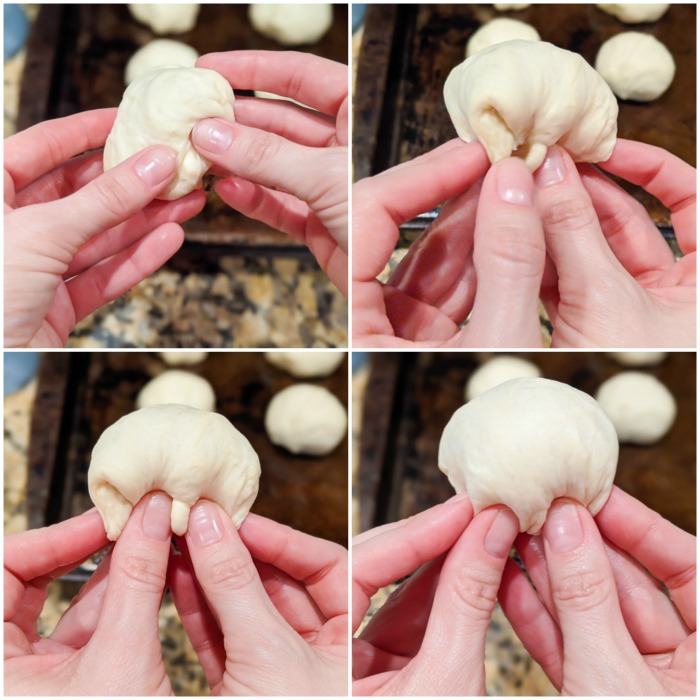
Cook the dumplings
Step 12: After the dumplings have risen even more (“They’re aliiiveeee!”), take your 12-inch skillet and melt 2 tablespoons of butter in it. (Make sure to choose a skillet with a tight lid—we be steaming!)
Step 13: After the butter is melted, add 2 tablespoons of sugar and ½ cup cold milk to the skillet and bring this mixture to a boil. This won’t take long since it’s pretty shallow.
Step 14: When it reaches a boil, reduce the heat to a simmer and arrange the dumplings in the pan. Yes, they’ll be all squished together but that’s how you want it. Cover the pan and simmer for 25 minutes without removing the lid during this time. I know it’s tempting… but that’s why I have a glass lid.
Step 15: After 25 minutes you can check to see how much of the liquid mixture is left in the bottom of the skillet. Keep simmering until all the liquid has been absorbed. The bottoms of your dumplings will be golden brown and caramelized.
Step 16: Remove the skillet from the heat, remove the dumplings from the skillet carefully with a spatula, and serve with the vanilla sauce I’m about to tell you how to make (and top with a little powdered sugar if you so choose).
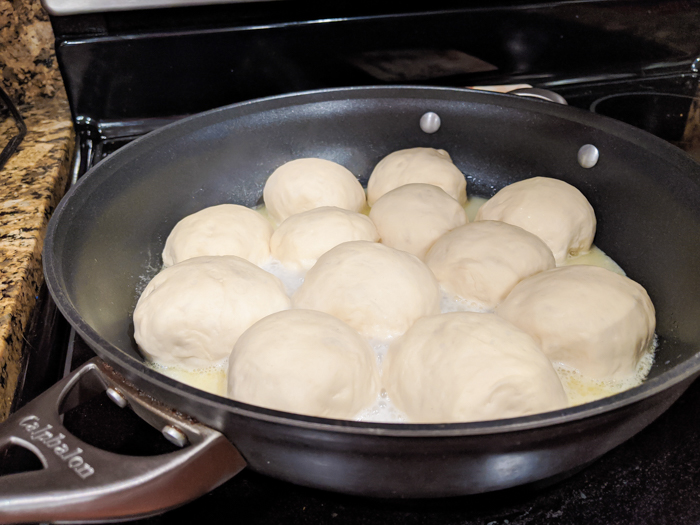
How to make the vanilla sauce
Step 1: In a medium-sized bowl, beat together the 4 egg yolks and ½ cup of sugar (preferably with a mixer, but a super fast whisk will do). Do so until the sugar is dissolved and the mixture is a pale yellow color. This will take about 3- 4 minutes.
Step 2: Bring 2 cups of milk to a boil in a medium-sized saucepan.
Step 3: After the milk has begun boiling, pour it over the egg/sugar mixture, super slowly, mixing it constantly with the mixer or some super fast whisk action. (Personally, I’d opt for the mixer as you’ll get a better sauce texture. Plus, laziness.)
Step 4: Pour your new mixture back into the saucepan and continue to heat—without letting it boil—until it becomes a slightly thick-ish sauce. This could take 15 minutes, maybe 20, maybe more. Let’s just say it’s not instant. You want the end result to be somewhere between the consistency of melted ice cream and Hershey’s syrup.
Step 5: After the sauce is as thick as you want it, remove it from the heat and whisk in the vanilla extract.
Important note: know that the sauce will thicken up after removing it from the heat and there’s a lot of wiggle room here. It’ll taste good no matter what.
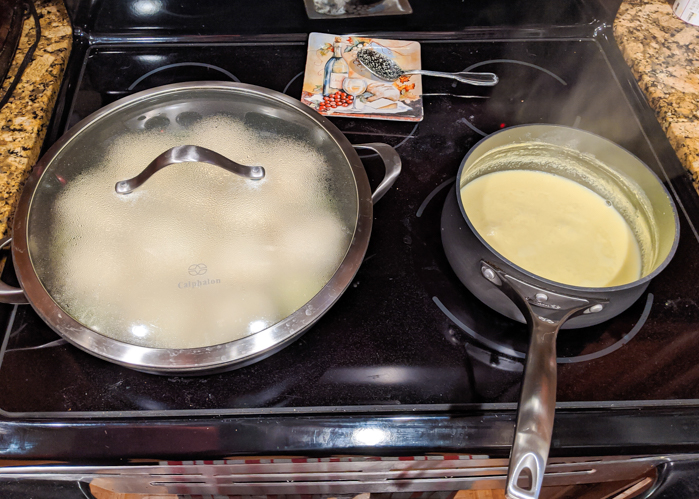
Also, I should probably give you the raw egg warning about how “consuming raw or undercooked eggs may increase your risk of foodborne illness.” Basically, consume at your own risk, and not solely because it’s me giving you cooking advice.
Enjoy!
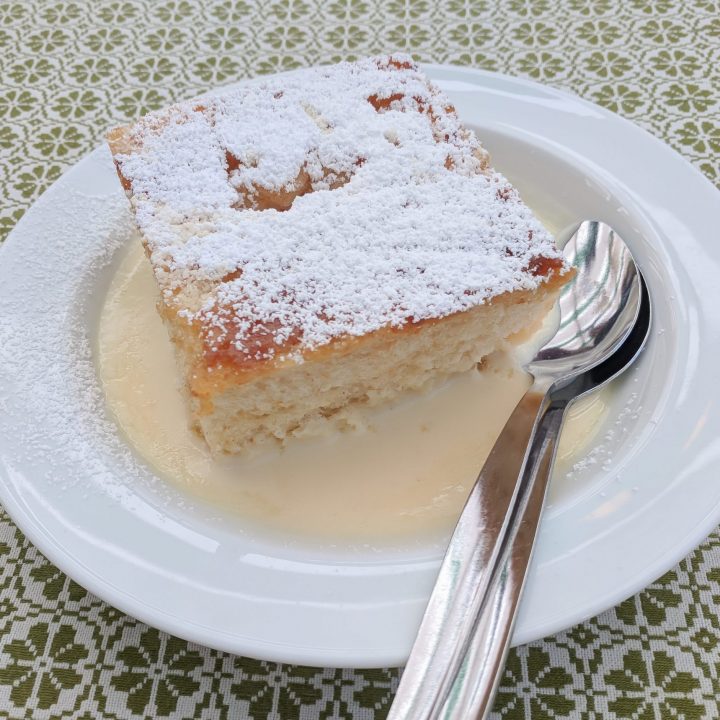
How to Make Dampfnudel
These puffy sweet German dumplings are perfect for a light dessert that isn't incredibly rich. They would be perfect for an Oktoberfest-themed party.
Ingredients
For the dumplings
- 1 ⅛ tsp active dry yeast
- 1 cup milk - warmed to 110°F, total
- ½ cup milk - cold
- 4 tbsp sugar, total
- 4 tbsp melted butter, total
- ¼ tsp salt
- 2 ¼ cups all-purpose flour, sifted (plus a little extra for your kneading surface)
For the vanilla sauce
- 4 egg yolks
- ½ cup sugar
- 2 cups milk
- 1 tsp vanilla extract
Instructions
How to make the dumplings
- Heat 1/4 cup of milk to 110°F.
- Add 1 tbsp sugar to warm milk, stir until dissolved.
- Sprinkle the yeast on top of the warm milk and whisk lightly. Set aside for 10 minutes.
- In a large bowl, mix together 3/4 cup of warm milk, 1 tbsp of sugar, 2 tbsp of melted butter, and 1/4 tsp of salt. Whisk until the salt and sugar are dissolved.
- Pour the bubbly yeast mixture into this mixture along with 2 1/4 cups of flour. Beat until you have a smooth ball of dough.
- Knead dough for 5 minutes on a lightly floured surface.
- Place dough inside a lightly oiled bowl, cover with a thin towel, set aside for 1 hour to rise.
- Punch down dough.
- Form dough into uniform shape and cut into 12 equal pieces.
- Form each piece into a dumpling.
- Place all 12 dumplings a couple inches apart on a lightly oiled baking sheet and set aside for 45 minutes to rise more.
- Melt 2 tbsp of butter in a 12-inch skillet that has a tight-fitting lid.
- Add 2 tbsp of sugar and 1/2 cup of cold milk to the melted butter in the skillet and bring to a boil.
- Once it begins to boil, reduce to a simmer and arrange the dumplings in the skillet. Cover and let simmer for 25 straight minutes without removing the lid.
- Check the level of the liquid and continue to simmer (covered) until all the liquid has dissolved.
- Remove from heat and eat!
How to make the vanilla sauce
- In a medium-sized bowl, beat together 4 egg yolks and 1/2 cup of sugar until dissolved (about 4 minutes)
- Bring 2 cups of milk to a boil in a saucepan.
- Pour boiling milk over the egg/sugar mixture very slowly, beating with a mixer continuously.
- Pour this new mixture back into the saucepan and heat (without boiling) until you have a sauce-like consistency.
- Remove from heat, whisk in vanilla extract.
- Serve over dumplings!
Notes
Dampfnudeln should be eaten as soon as possible after cooking (official recommendation, you're welcome). However, you can store for a few days and reheat as needed. (30 seconds in the microwave works for me - still delicious.)
Recommended Products
This section may contain affiliate links. As an Amazon Associate and member of other affiliate programs, I earn from qualifying purchases.
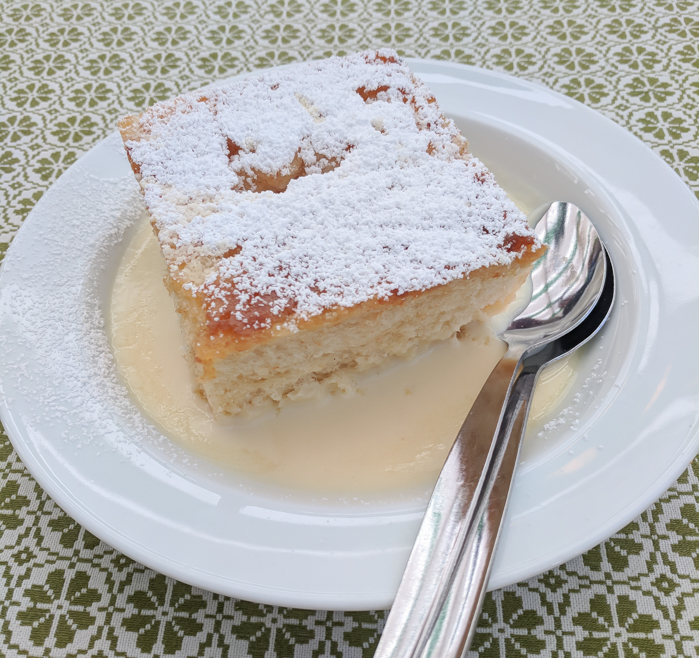
More info for Oktoberfest
- Heading to Germany? Find great places to stay here.
- Travel planning: Pick up a Germany guidebook for all your sightseeing and this Germany customs and culture guide too.
- What other German recipes have I covered? Check out these posts.
- Like this post? Have questions? Hit me up on Instagram
How did your dampfnudels turn out? Let me know in the comments below!

Save this info, pin this image:
